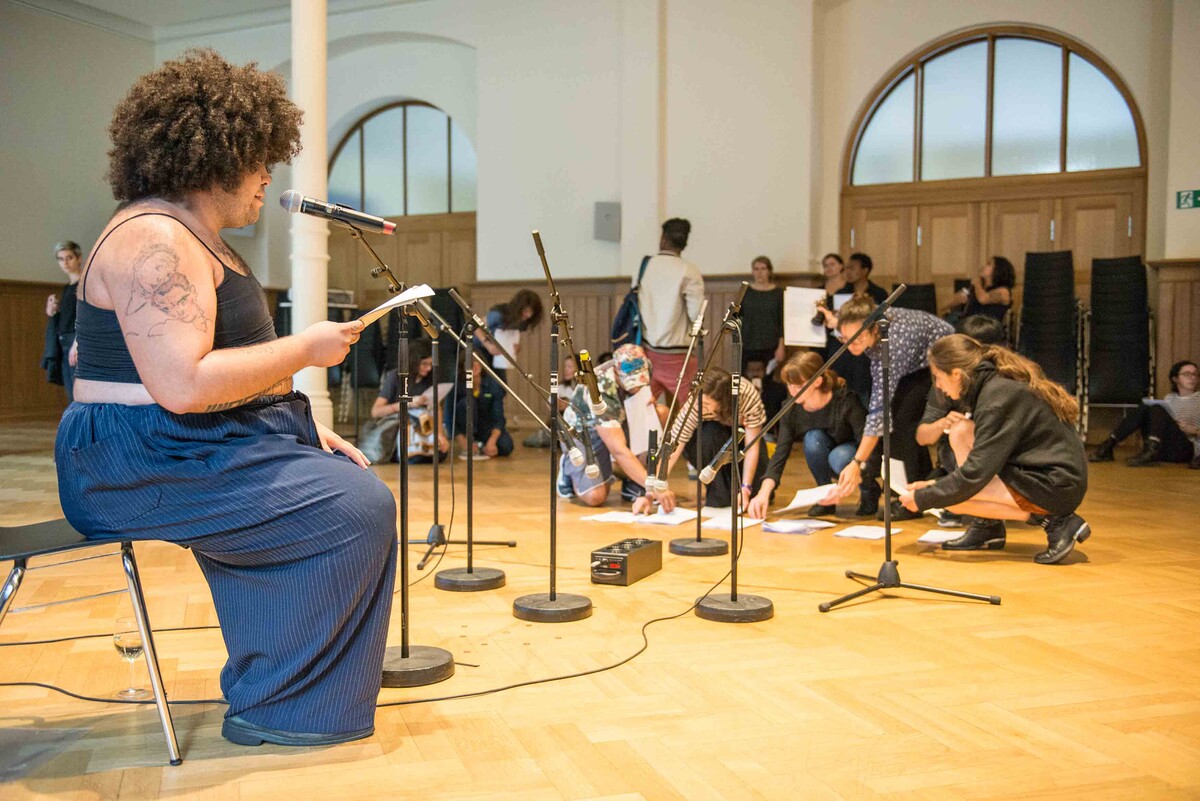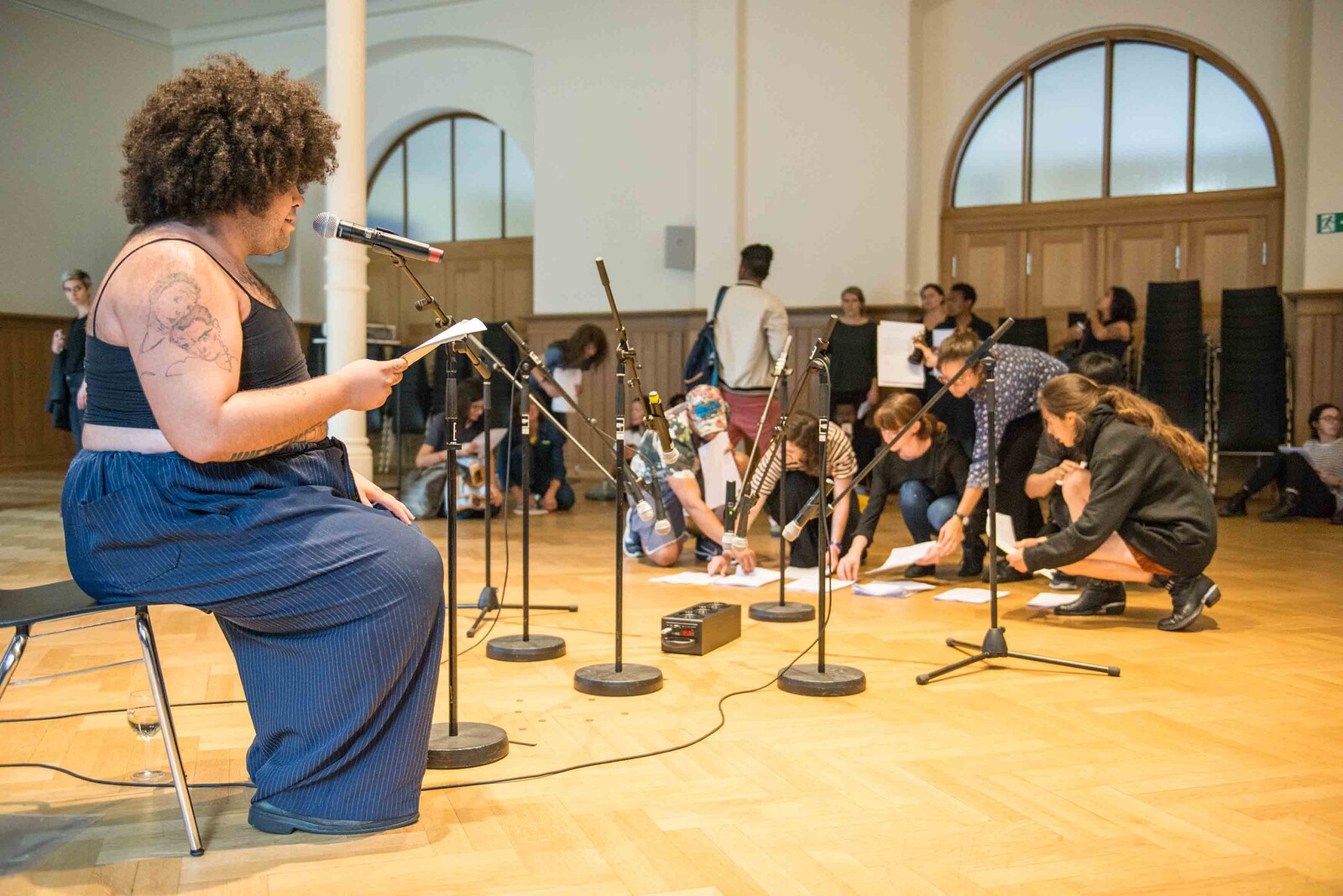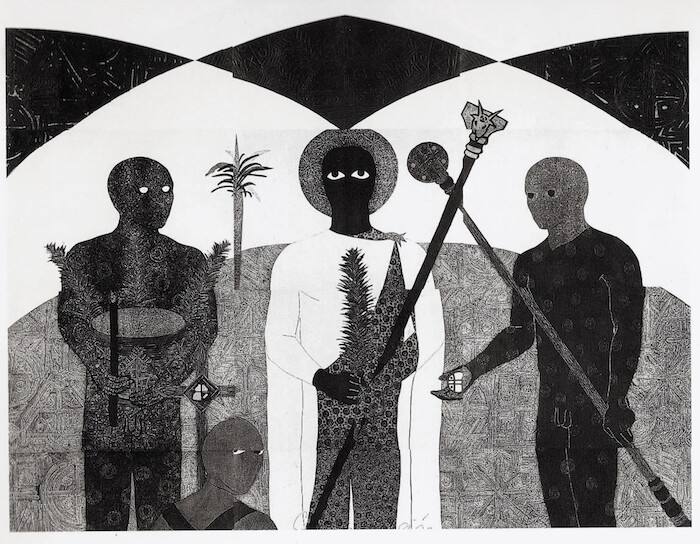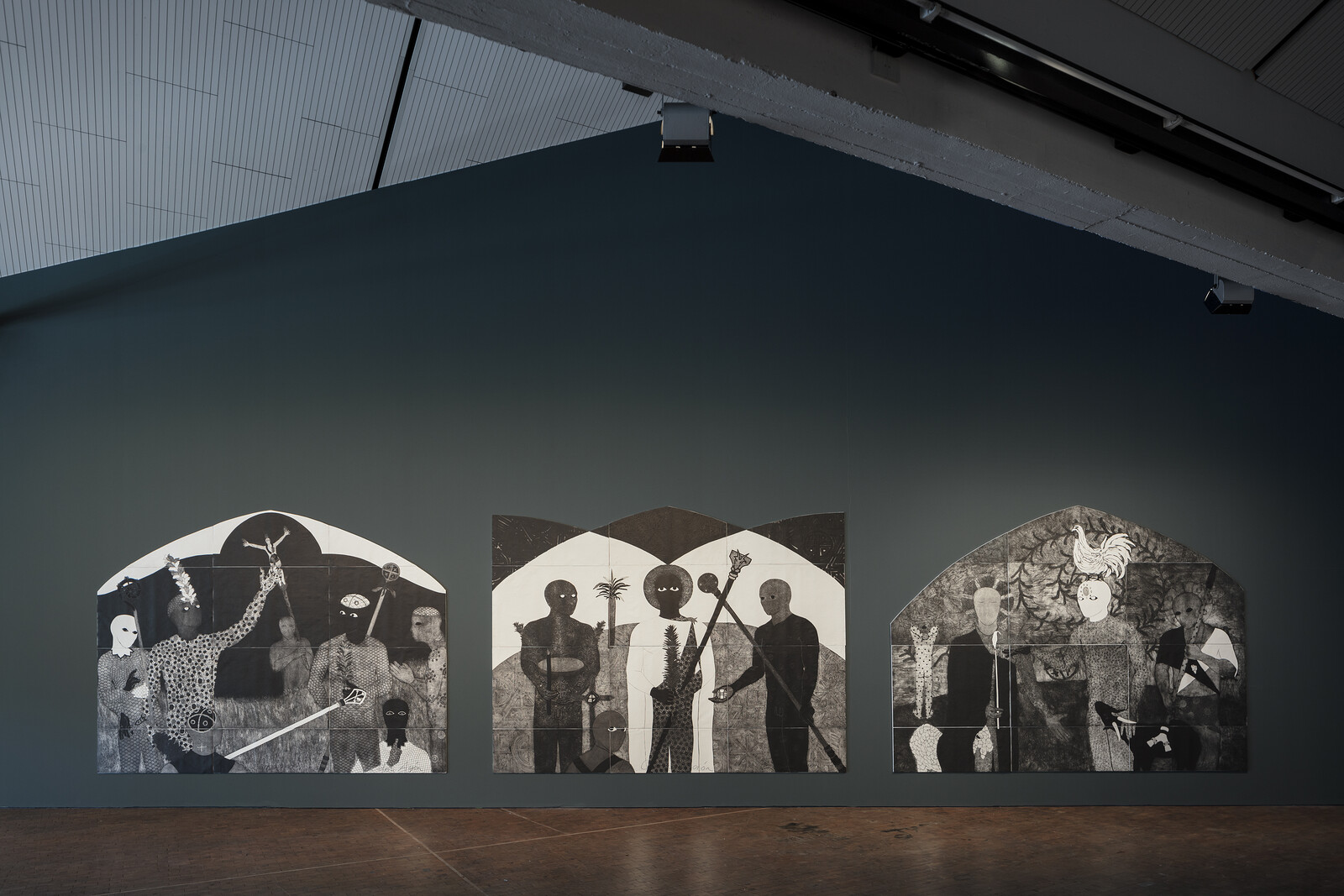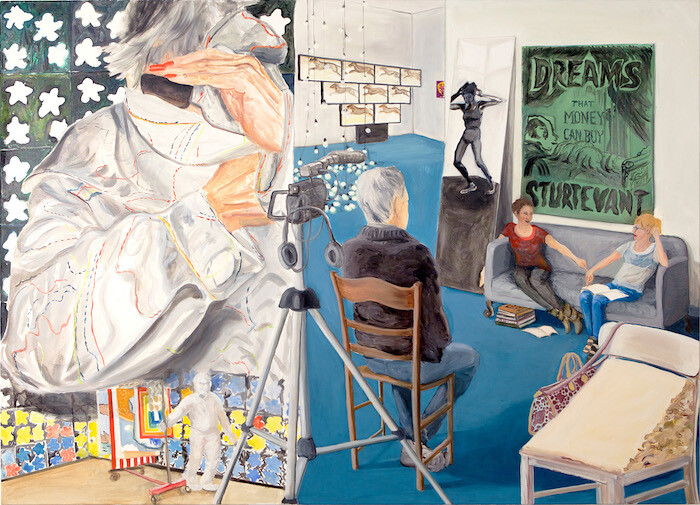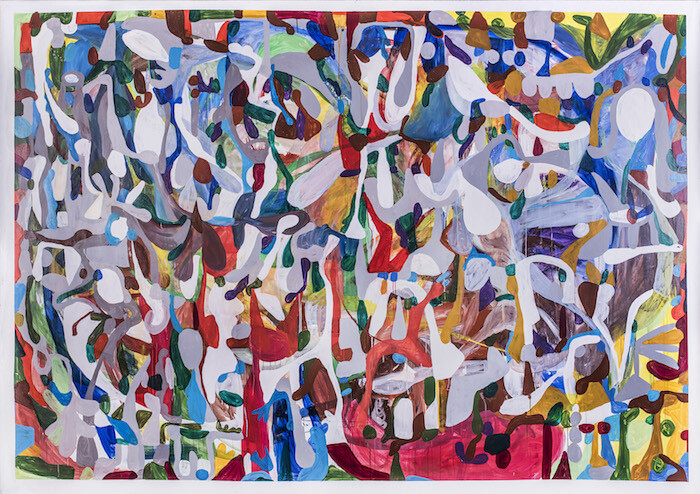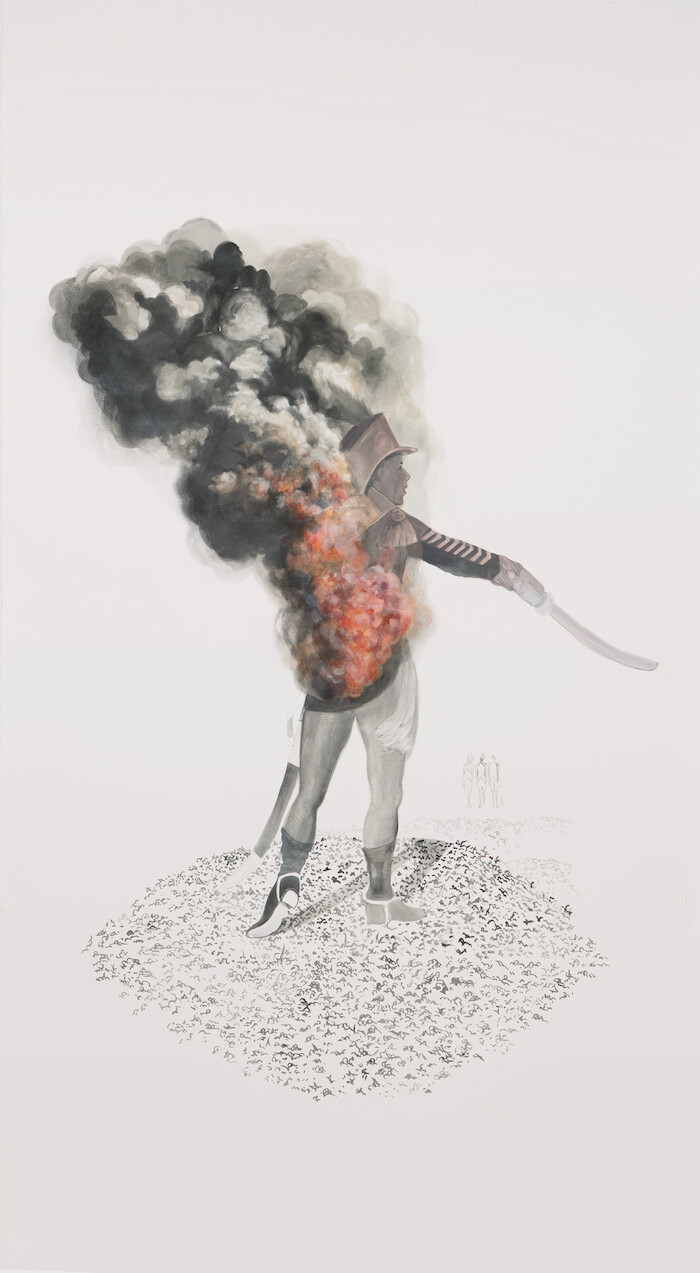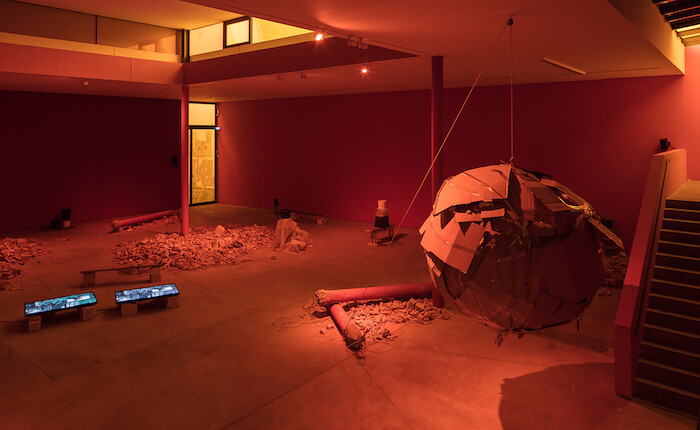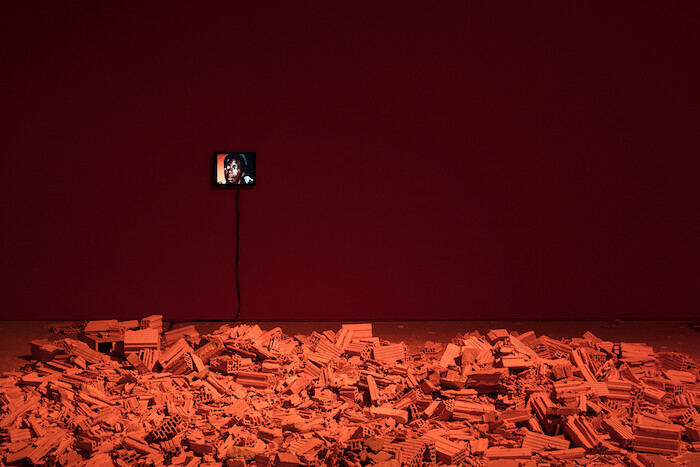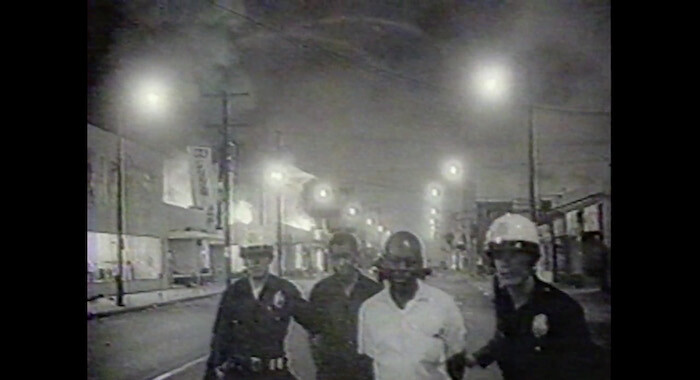During the press conference for the 10th Berlin Biennale, henceforth snappily referred to as “BBX,” the attendees were given the opportunity to contemplate Hakuin Ekaku’s lesser-known koan—“what is the sound of one person’s inappropriately timed clapping?”
The lone applauder, whose ruckus died away with all the glory afforded a deflating balloon, was prompted by Yvette Mutumba’s statement that, unlike her fellow curatorial team members, who were speaking English, she would be making her opening comments in German. Respect for a host country’s mother tongue notwithstanding, the clapping was a blunder considering the strong international representation in the room and the curators’ refusal “to be seduced by unyielding knowledge systems and historical narratives that contribute to the creation of toxic subjectivities.”1 Language, of course, is one such system.
For curator Gabi Ngcobo, BBX is entrenched in a war against oppression—and, as the abovementioned faux pas confirms, there are landmines everywhere. It is therefore unsurprising that the accompanying exhibition texts read as though written with an awareness that each word is potentially lethal to their curatorial cause. The authorial challenge was doubtless intensified by the biennale’s sweeping thesis: to ignite “a conversation with artists and contributors who think and act beyond art as they confront the incessant anxieties perpetuated by a willful disregard for complex subjectivities.”2 What results is a capacious call for “new grammars.” Unlearning, uncertainty, and non-conformity are among the deconstruction tactics employed by BBX’s team to combat hatred while generating a positive and tangible future for those who have been historically subjected to it.
Despite its claims to operate beyond art, the majority of BBX looks very much like art—a formalism which slows its momentum even at its most radical. Perhaps this tension (or lack thereof) is what Ngcobo is excusing when she writes in the guide book about the current moment for the Berlin Biennale as a “crossroads” that “demands an introspective approach.”3 Her pairing of forceful critical rhetoric with dignified repose commands respect. When put into practice at BBX, however, these admirable conceits have the unfortunate effect of counteracting one another, giving the biennale a moderate and traditional touch that fails to match its own political imperatives. This aridity is enhanced by standard display strategies and predictable venue choices.
Despite the disheartening feel of BBX as a whole, its artist roster is strong, and a series of individual works stand out. At Akademie der Künste—one of the five venues spread around the city—paintings, prints, and drawings dominate. Belkis Ayón’s large-scale monoprint triptych La consagración I, II, III [The Consecration I, II, III] (1991) is handsomely paired with her ink-saturated collagraphs from 1997–98. Explicitly figurative and implicitly narrative, the prints depict a hidden world linked to Abakuá, an Afro-Cuban secret society with which the artist felt a particular affinity during her lifetime. In a related manner, Patricia Belli’s textile pieces fashioned from garter belts, stockings, fabric dolls, and thorns describe her own world-building practice functioning outside traditional metanarratives. Her installation Desequilibradas [Unbalanced] (2018), a collection of 12 industrial gray, life-sized polystyrene foam heads, lends further credence to her feminist motivations. Placed on the floor, the stoic noggins, which resemble decapitated Julius Caesars, are knocked about underfoot. It is a simple maneuver that demotes the foundational idolatry of the male-dominated western world from deity to amusing conversation piece. Elsewhere, Herman Mbamba’s jubilant technicolor paintings Until the wind blows for another time and Wait for me in the lurking landscape (both 2017–18) offer visual relief from the sibylline darkness. Psychologically, however, the canvases have more in common with their neighbors than the biomorphic globules and lava-lamp buoyancy might convey. They are testaments to the artist’s own creative torments and political struggles.
But pride of place at the Akademie is held by Firelei Báez, who sets the tone and the bar for this section of the biennale. A trompe l’oeil sculpture, placed on the front lawn, replicates part of the early nineteenth-century Haitian military castle San-Souci (now in ruins)—itself a replica of the eighteenth-century German leisure palace Sanssouci (still in great shape). Sculpted in a manner that rivals Disney World’s superficial best, the acrylic monument invites a pause beneath its breezing archways and distressed caryatids, where one gazes upon the decorative wall paintings and discerns empirical designs subtly combined with resistance icons, such as panthers, black power fists, and hair picks. Another stunning work, located in the foyer, is more immediately identifiable as Báez’s. At its center is one of her trademark portraits: a figure whose head is swathed in turban folds and whose features, except the eyes, are obscured in brilliant color. The eyes are the painting’s sharpest detail: they radiate with inquiry. “What are you looking at?” They seem to ask. “Who do you know think you are?”
Across town, KW Institute for Contemporary Art houses the other major branch of BBX. During BB9, this sprawling gallery was temple to some of the most gut-punching examples in a curatorial program renowned for its soullessness. This time around, the tone is more humane.
In the central exhibition space, Dineo Seshee Bopape’s grandiose installation Untitled (Of Occult Instability) [Feelings] (2016–18)—which includes works by Jabu Arnell, Lachell Workman, and Robert Rhee—is overwhelmingly orange. Initially an electrifying experience, the sodium glow takes on a lurid quality as one descends into a pit of crushed brick, fallen pillars, and bent rebar. Video monitors are peppered throughout but are generally ignored by the crowd in favor of a giant, dangling sphere made from cardboard debris. On a nearby plastic barrel—the kind used for storing rainwater, trash, and bodies dissolved in lye—sit several small gourds unnaturally bound in their growth by intricate metal cages. The gourds are quiet dedications to the body in pain. Their permanent ligatures, so elaborately soldered, symbolize the dedication and effort it takes to manufacture suppression. To extend the analogy further, this process of soldering, like the active development of systemic injustice, risks damaging the witness if viewed without proper protection. One can only see the bond after it is forged and the shackles are formed. To observe smithing requires a visor that is a deep, translucent amber, its hue similar to the light pouring through the gelled windows in Bopape’s room, where she has metaphorically filtered out the blinding flares that weld together an unjust world and revealed the devastation such rigid power structures have ironically begotten.
The furthest reaches of BBX takes its visitors into Berlin’s Moabit neighborhood—not a long journey, but one that seems Biblical given the name of the destination. A hot highway stroll leads to the repurposed railroad depot that is ZK/U - Zentrum für Kunst und Urbanistik [Center for Art and Urbanistics], a gallery and artist residency facility. There, in its dank basement, one finds Tony Cokes’s so-called “clubhouse presentation” consisting of the riot-proud ode to emancipatory politics, Black Celebration (1988), and other videos spanning the years 2006–12. It is a dark experience; its radicalism is welcome and needed. The squat TV monitors are the only light source. Cokes’s text-based visuals scroll across screens red and blue. One tells of torture music, another of the British Military’s “five techniques” for interrogation. Then the Skinny Puppy track begins to play and the following words appear large on a projection screen4:
LET’S HAVE A BLACK
CELEBRATION
BLACK CELEBRATION
TONIGHT
A CELEBRATION IN
SILENCE,
A CELEBRATION OF
NOISE:
TO CELEBRATE THE FACT
THAT WE’VE SEEN THE
LACK OF ANOTHER BLACK
DAY
Seventeen minutes and seventeen seconds later, the video ends. The crowd holds their applause.
Berlin Biennale for Contemporary Art, “We Don’t Need Another Hero” (Exhibition notes, 2018).
Ibid.
10th Berlin Biennale for Contemporary Art: We Don’t Need Another Hero Guide Book, Edited by Gabi Ngcobo and Yvette Mutumba.
Martin L. Gore, Black Celebration, audio recording performed by Depeche Mode (London: Westside Studios, Genetic Studios; Berlin: Hansa Mischraum, 1986) as quoted in Tony Cokes’s video Black Celebration (1988).
